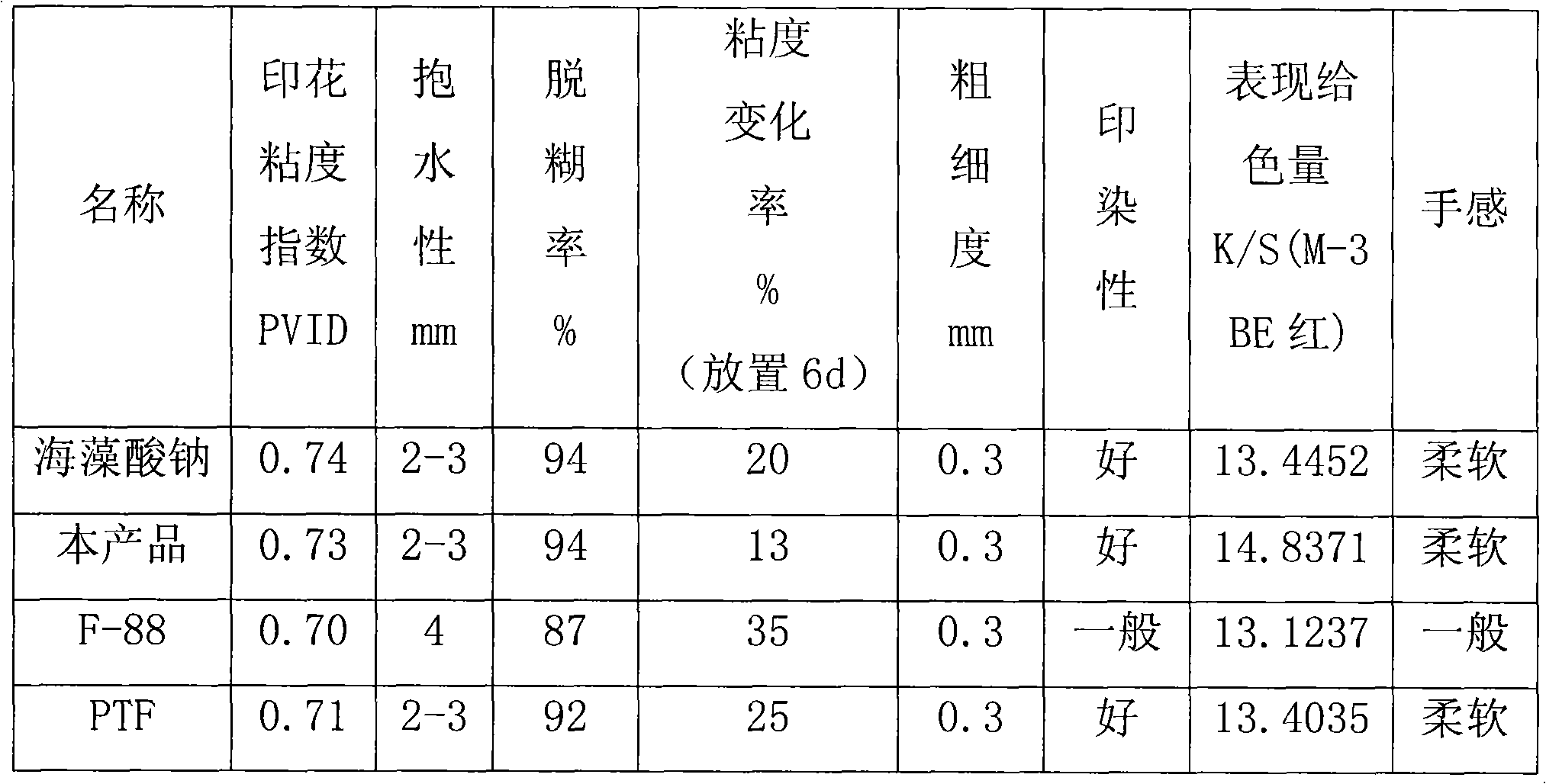Environmental protection type dispersing and reactive printing universal thickening agent and production process
A reactive printing, general-purpose technology, applied in textiles, papermaking, dyeing, etc., can solve the problems of dark color of textiles, adverse environmental effects, long pulping cycle, etc., achieve strong structural viscosity, good dispersion and surface activity, The effect of optimizing the production process
- Summary
- Abstract
- Description
- Claims
- Application Information
AI Technical Summary
Problems solved by technology
Method used
Image
Examples
Embodiment 1
[0027] 1) neutralize 200g of acrylic acid and 40g of methacrylic acid with 350g of 32% sodium hydroxide solution to a pH value of 6.3-6.4;
[0028] 2) Add 60g of acrylamide, 0.3g of N-N' methylenebisacrylamide and 1.4g of initiator potassium persulfate to form an aqueous phase;
[0029] 3) Add 200g of white oil, 30g of sorbitan monooleate, and 5g of butyl acrylate into the reaction kettle to form an oil phase;
[0030] 4) Add the water phase to the oil phase to emulsify for 10 minutes, add 0.4 g of sodium hydrosulfite, start the polymerization reaction, raise the temperature to 90°C, keep it warm for 1 hour, and then cool down to 40°C;
[0031] 5) Add 30g of fatty alcohol polyoxyethylene ether and 20g of hydrophilic silicone oil into the cooled material after the reaction, and mix thoroughly to obtain an environmentally friendly general-purpose thickener for dispersion and active printing.
Embodiment 2
[0033] 1) neutralize 200g of acrylic acid and 40g of methacrylic acid with 350g of 32% sodium hydroxide solution to a pH value of 6.3-6.4;
[0034] 2) Add 60g of acrylamide, 0.3g of N-N' methylenebisacrylamide and 1.4g of initiator potassium persulfate to form an aqueous phase;
[0035] 3) Add 200g of aviation kerosene, 30g of sorbitan monooleate, and 5g of butyl acrylate into the reactor to form an oil phase;
[0036] 4) Add the water phase to the oil phase to emulsify for 10 minutes, add 0.4 g of sodium hydrosulfite, start the polymerization reaction, raise the temperature to 90°C, keep it warm for 1 hour, and then cool down to 40°C;
[0037] 5) Add 30g of fatty alcohol polyoxyethylene ether and 20g of hydrophilic silicone oil into the cooled material after the reaction, and mix thoroughly to obtain an environmentally friendly general-purpose thickener for dispersion and active printing.
[0038] The printing test index comparison of the environment-friendly dispersing and ...
PUM
 Login to View More
Login to View More Abstract
Description
Claims
Application Information
 Login to View More
Login to View More - R&D
- Intellectual Property
- Life Sciences
- Materials
- Tech Scout
- Unparalleled Data Quality
- Higher Quality Content
- 60% Fewer Hallucinations
Browse by: Latest US Patents, China's latest patents, Technical Efficacy Thesaurus, Application Domain, Technology Topic, Popular Technical Reports.
© 2025 PatSnap. All rights reserved.Legal|Privacy policy|Modern Slavery Act Transparency Statement|Sitemap|About US| Contact US: help@patsnap.com

